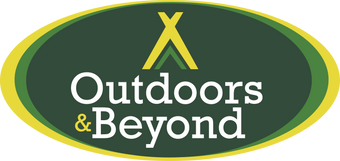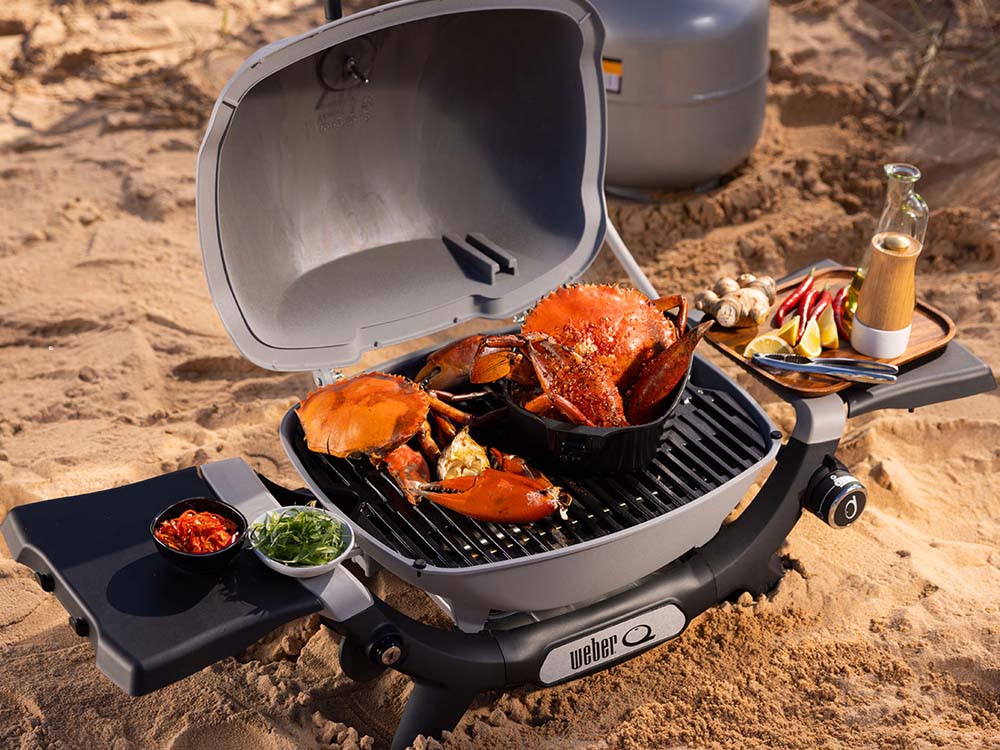There are two distinct cooking methods when using a Weber barbecue.
The way we create these cooking methods differs between barbecues, and the fuel types, but the overarching principals remain true across all Weber barbecues designed for covered cooking (lid down cooking).
These two methods are Direct and Indirect Cooking.
- Direct Cooking Method
- How to setup a Weber Q for Direct Cooking
- Indirect Cooking Method
- How to setup a Weber Q for Indirect Cooking

Direct Cooking Method
The direct method is used for grilling or searing food on your barbecue. Food is cooked directly above a heat source and directly on the cooking grill. Direct cooking is recommended for foods that will cook through to completion in under 20 minutes, and that will be turned, at least once, during cooking (eg steaks, sausages).
There are a couple of different ‘heat sources’ when we talk about the direct cooking method. There is the radiant heat from the flame of the fuel source, and also the conductive heat that is absorbed by the cooking grills, that conducts heat directly onto your food to create caramelised sear marks.
Direct hotplate or accessory cooking:
A slight variation on the standard direct cooking method involves the use of a solid hotplate or accessory, such as a frypan or casserole dish.
The heat source is largely conductive, with the heat absorbed by the hotplate or accessory and conducted onto your food to create an ‘all over’ caramelisation.

Setting up your Weber Q barbecue for Direct Cooking
GRILLING:
Light your barbecue, and pre-heat on high according to the instructions in the Quick Start Guide.
Once pre-heated, turn your Q burner control dial to the recommended cook setting appropriate to the cooking method and temperature range you’re aiming for. These are detailed in the Quick Start Guide for your barbecue.
Place your food directly onto the cooking grill, close the lid, and cook for ½ the cooking time. Turn / flip your food at the halfway mark, then close the lid and cook for the remaining cooking time.
Tip: For some foods, such as corn on the cob, you will need to turn your food 3 times, to cook on 4 sides, rather than 2 sides.
HIGH HEAT SEARING (ONLY APPLICABLE TO + MODELS):
Light your Q burner and then your + burner, and pre-heat on high according to the instructions in the Quick Start Guide.
Once pre-heated, place your food directly onto the cooking grill, close the lid, and cook for ½ the cooking time. Turn / flip your food at the hallway mark, then close the lid for the remaining cooking time.
Tip: Remember that searing is conducted over a very high direct heat, which will result in very fast caramelisation of your food. It is not recommended for food with high fat content, due to the intense heat causing flare ups.
HOTPLATE COOKING:
Depending on the type of hotplate you’re using, there are different ways to set up your barbecue. A Breakfast Plate sits on top of the existing cooking grill, a Half Hotplate replaces half of the cooking grill and a Full Hotplate replaces both halves of the cooking grill.
Once your hotplate is fitted, light your barbecue and pre-heat according to the instructions in the Quick Start Guide. Once pre-heated, turn your burner control dial(s) to the recommended cook setting appropriate to the cooking method and temperature range you’re aiming for. These are detailed in the Quick Start Guide for your barbecue.
Place your food directly onto the hotplate, close the lid (see note), and cook for ½ the cooking time. Turn / flip your food at the halfway mark, then close the lid and cook for the remaining cooking time.
Note: When using the full hotplate accessory, great results can be achieved with either the lid down or open. You’ll find that food cooks a little more quickly with the lid down.
Indirect Cooking Method
The indirect cooking method is used for roasting, baking and low and slow cooking. Food is not cooked directly over a heat source or directly on the cooking grill above a heat source.
Indirect cooking is recommended for foods that will take longer than 20 minutes to cook to completion, and they generally don’t need to be turned at all during the cooking process (eg roast meat, baked goods).
The indirect cooking method relies predominantly convection heat, where the hot air created by the fuel source circulates around all around your food, cooking it evenly on all sides.
In the case of your Weber Q barbecue, you’ll need a convection tray and trivet, that shields and elevates your food off the grill and creates room for the hot air to circulate all around your food.

Setting up your Weber Q barbecue for Indirect Cooking
ROASTING AND BAKING:
Place a Weber Q Convection tray in a horizontal position in the centre of your Q cooking grill. Place a Q Roasting trivet on top of the convection tray. Light your barbecue, and pre-heat on high according to the instructions in the Quick Start Guide.
Once pre-heated, turn your Q burner control dial to the recommended cook setting appropriate to the cooking method and temperature range you’re trying to achieve. These are detailed in the Quick Start Guide for your barbecue.
- For roast meats and vegetables, we recommend placing your food directly onto the roasting trivet.
- For baking, you will need a tray or dish to place your food in/on before you put it onto the roasting trivet. The Weber Q casserole dish and frying pan are both great for baking, but a baking tray, cake tin or muffin tray are also suitable.
- For pizza making, a pizza stone should be pre-heated on top of the convection tray and roasting trivet
Place your food onto the barbecue (see above notes!), close the lid, and cook as directed in the recipe. There is no need to turn your food during cooking.
LOW AND SLOW COOKING (ONLY APPLICABLE TO + MODELS):
Place the convection tray on the far-right side of the cooking grill, in a horizontal position. Set the trivet on top of the convection tray. Place a small drip pan filled with water to the left of the convection tray and trivet, in a vertical position.
Light your Q burner and then your + burner, before turning off your Q burner, and pre-heat with the + burner on, according to the instructions in the Quick Start Guide.
Once pre-heated, place your food directly onto the roasting trivet, close the lid, and cook as directed in the recipe. There is no need to turn your food during cooking.
In both cooking methods, it is important to pre-heat your barbecue before placing your food into it.






Leave a comment